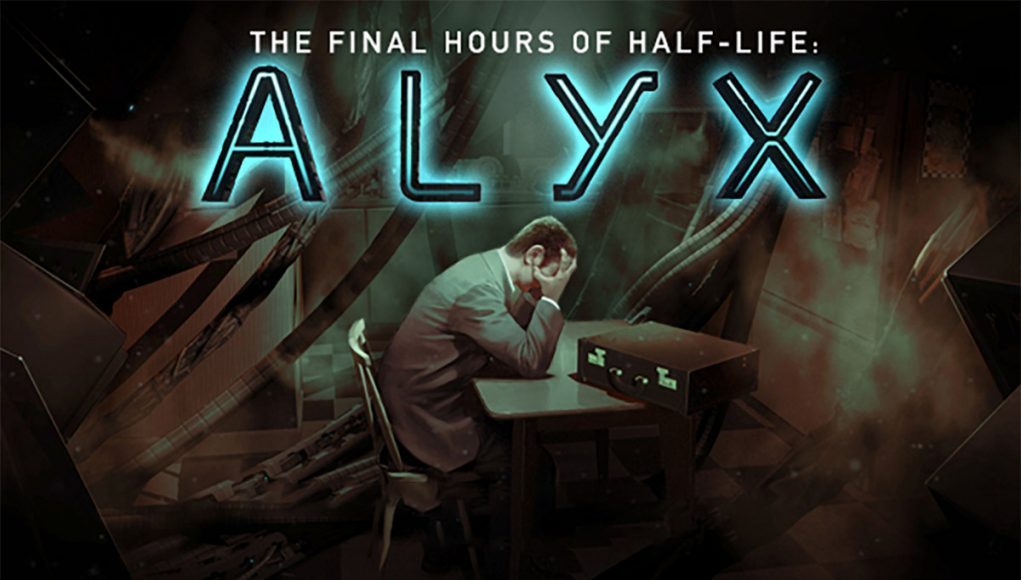It was big news back in 2017 when Valve announced that it was working on “three full [VR] games, not experiments.” It wouldn’t be until late 2019 that one of the three was revealed as Half-Life: Alyx. But what of the other two? A new book that goes behind-the-scenes at Valve reveals the fate of those projects.
The Final Hours of Half-Life: Alyx is the latest behind-the-scenes book from game journalist & MC Geoff Keighley. Presented as an interactive e-book available on Steam, the work is an insightful look into Valve’s unorthodox inner workings and the events that preceded the launch of the studio’s first full-blown VR title, Half-Life: Alyx.
As we now know, Alyx launched to critical acclaim, making its mark as one of the best Steam games ever. But if Alyx was just one of “three full [VR] games,” in development at Valve, what happened to the other two?
As recently as March 2019 Valve head Gabe Newell apparently indicated that, indeed, three VR games were still in the works.
The Final Hours of Half-Life: Alyx, gives us some clues about what the games were, but unfortunately also explains how Alyx turned into a much larger project than Valve had originally envisioned, apparently subsuming those other projects in the process.
The book reveals that Valve was working on a game called A.R.T.I, which was built with a Minecraft-like voxel-based game engine that was separate from Valve’s Source engine. It was described as a “fun, light-hearted game—in a similar vein to the Portal series—[which] transported players to a manipulable world with full construction and destruction abilities.”
The game started development in 2013, but wasn’t initially envisioned as a VR game. Well after it had begun development and then faded to the back-burner, the book says that A.R.T.I resurfaced as one of the other two VR games in development at Valve alongside Alyx.
The other VR game in development was called SimTrek. The book provides little detail on what the game would entail, but the project was led by “some of the members of the team behind Kerbal Space Program,” which had joined Valve. Given the developer lineage with KSP (a simulator-focused space flight game) it seems safe to guess that it would a simulator style game, while the name itself seems oddly similar to Star Trek… they would be that obvious though, would they?
But, as The Final Hours of Half-Life: Alyx reveals, “development on both those other projects stopped, however, as Alyx’s team size continued to grow.”
Valve had originally envisioned Alyx as a VR game of just a few hours in length and made largely out of updated Half-Life: 2 assets. But as the project started gaining steam the scope of the game (and its team) ballooned, ultimately swallowing up resources and momentum that otherwise could have carried those projects to completion.
In fact, the development team that came together for Alyx was the “largest single team we’ve ever had at Valve,” the company revealed earlier this year.
That jibes with what we learned in an interview earlier this year with one of Alyx’s lead game designers, Robin Walker. We asked him point blank if the two other VR games were still in development at Valve.
“We haven’t made any sort of long term plans after this. We’re back [to building games] in the way we haven’t in the last few years [which we’re excited about],” Walker said. […] What we do next is something we haven’t decided. We have ideas but there’s no reason for us to commit right now. So we’re just going to wait and see how this goes.”
But A.R.T.I and SimTrek weren’t the only VR projects at Valve. In fact The Final Hours of Half-Life: Alyx reveals a handful of different prototypes and concepts Valve had built over the years, some of which can be directly traced to what would become Alyx, and others that petered out along the way.
One of those VR concepts was called Borealis. Marc Laidlaw, a Valve writer who worked on all of the Half-Life games before Alyx, envisioned a VR game which would be set on the Borealis, the Aperture Science Research ship mentioned in Half-Life 2.
Players would explore the vessel as it ricocheted in time back and forth between the Seven Hour War, the conflict between the Combine and the citizens of Earth, and a time set shortly after the events of Half-Life: 2 Episode 2. There was even talk of a fun VR mini-game where players would fish off the bow of the ship. Ultimately, Borealis never gained much momentum internally and ended up in the pile of shut down Valve prototypes.
There’s lots more interesting behind-the-scenes insights revealed in The Final Hours of Half-Life: Alyx, which is an easy and fascinating read for anyone interested in unique inner workings of Valve.







